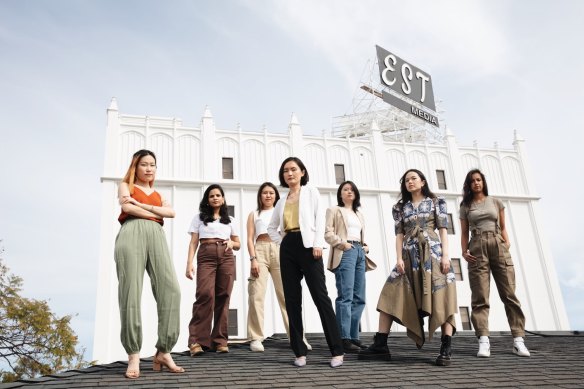Vice attitude with NYT rigour: The Eastern Standard Times targets diaspora audience
Hong Kong-born, Australian journalist Keshia Hannam is still surprised by the lack of Asian representation in mainstream media.
In her time freelancing for US and UK publications such as Forbes and Vogue, she found herself disillusioned and briefly moved away from journalism altogether.
“There was so much more to the society that I was living in and felt like I represented,” she says.
Fast-forward to 2022 and Hannam is trying to change that narrative. Several months ago she came to Australia as the newly appointed editor-in-chief of a publication targeting young people. But not just any young people.
The Eastern Standard Times, named after the time zone of the countries it focuses on, is trying to talk to people like Hannam – the Asian diaspora – through short-form video content.

Backed by a Taiwan investor, The Eastern Standard Times is just one part of EST Media Holdings, a media group launched by former Vice Media executive Eric Tu and entrepreneur and co-owner of American video-sharing social networking service, Triller, Jaeson Ma. It began two years ago with about $2.9 million in funding and launched in the US last year, before arriving to Australia.
The team want to make it a place where people of Asian descent – or those who have any connection to Asia – go to find their news. Hannam says the idea is “to make the East standard – as standard as the West”. There is certainly an appetite for it: Korean TV series Squid Game is still the biggest show to ever run on Netflix.
Hannam describes what EST is trying to achieve as a mix of digital broadcasting company Vice Media and The New York Times. Each week it produces short-form video created for Gen Z Asians by a group of women who were born and raised in Asia and now work in diaspora markets.
“We’re almost like a really influential TikTok-er,” she says.“Our ideal intersection would be something like Vice of the 90s when it was very much representative of a youth culture that hadn’t been seen before times the rigour of The New York Times…that sort of f**k off culture that Vice brought with the intelligence and thoroughness of The New York Times.”
The stories that appear on EST are different to what people might expect on multicultural broadcaster SBS. For example, last week the website run a mini-documentary on Kee Moo, a queer group from Northern Thailand who talk about their identity and journey. A mini-documentary from early August was with Chinese-Australian sculptor NC Qin, who turns fragile glass into weapons and armour. The site is currently promoting an episode on the billion dollar hair industry and its exploitation of Asian women.
“A really important pillar for me was that stories were told by the people who would live them,” Hannam says.
“I go to them and say what story do you want to tell? And then we fund it. We help a little bit with story structure and with editing, and then we help release it.
I feel like that’s part of our responsibility to make sure that people feel like their stories in these countries – where typically there isn’t a large media industry for humanity-based stories – has legs to kind of be seen.”
The publication isn’t making a lot of money, but it plans to do so in the same way as Vice’s production arm, Virtue: through partnerships with brands. “People are really interested in partnering with us to speak to the diaspora community in the US in Australia,” she says.
In the 2021 census, the number of responses categorised within Asian ancestral groups as a proportion of the total population amounted to approximately 17.4 per cent. A 2019 study from Media Diversity Australia found that only 6 per cent of presenters, commentators and reporters come from an Indigenous or non-white background.
Hannam is ambitious for the publication and what it could do to change that. She hopes to one day integrate the work of her team, a group of women working all over the world, into mainstream media.
“I’ve had conversations with SBS. But I don’t want to become a special interest company,” she says. “I feel like we need to actually start infiltrating Channel Seven’s, the Channel Nine’s of the world. I don’t think it serves us to keep being like ‘if you like exotic content,’ [come to us].”
The Business Briefing newsletter delivers major stories, exclusive coverage and expert opinion. Sign up to get it every weekday morning.
Most Viewed in Business
Source: Thanks smh.com